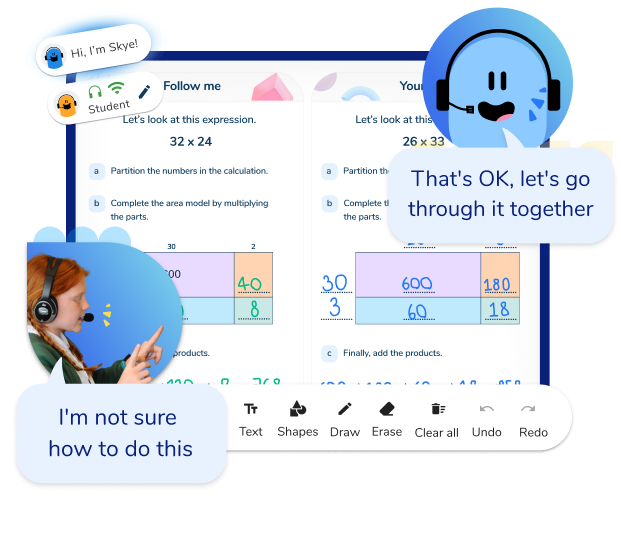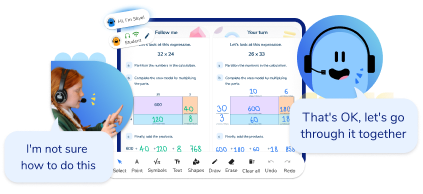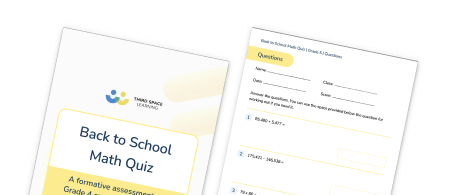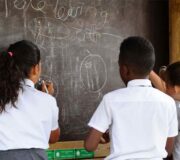Back To School Math Ideas For Parents: How To Make Sure Your Child Is Ready For Math In The New School Year
The summer holidays. Every parent knows that they are the perfect time for some rest, relaxation, and…some elementary school math?
While learning and school work is probably the furthest thing from both your mind (and certainly from your child’s mind) this summer, it is important that you spend some time over the holidays trying to keep the skills they put so much effort into gaining over the past year firmly at the forefront of their thoughts.
By doing this, you will be helping to ensure that your child will be ready to tackle all of the fun learning challenges that await them in their next year of school next year.
Back to School Math Quiz Grade 5
Use this 25 question quiz to assess how much grade 4 math content your new grade 5 students have remembered.
Download Free Now!- The summer slide is a real problem!
- Fear not, back to school math practice doesn’t have to be hard
- Keep talking about math all summer long
- Car trip math: Make “Are we there yet?” a thing of the past
- Math, paper, scissors
- Using technology to teach – Tablet math games
- Remember, back to school math doesn’t have to be daunting!
The summer slide is a real problem!
If you talk to any elementary teacher, they will complain about the ‘summer slide’.
Put simply, the summer slide is the phenomenon of children often appearing to start the new academic year with less skills and knowledge then they ended the previous year with!
The summer slide is an issue that can affect children in all elementary school subjects, but it is often worse in math as there are so many new and potentially confusing topics introduced to children each and every year throughout elementary school.
Fear not, back to school math practice doesn’t have to be hard
So, what can you do over the summer to help keep your child’s math skills and knowledge locked in, and to ensure they are ready to tackle their new learning in September?
Fortunately, the answer is simple and it is practice, practice, practice!
Practice doesn’t mean that your child needs to work through problems 24/7 over the summer, just that you should encourage them to keep their learning ticking over to ensure that the summer slide isn’t an issue come September.
Working with our math consultant we’ve taken a closer look at some quick and simple ways you can help prevent the math summer slide this year.
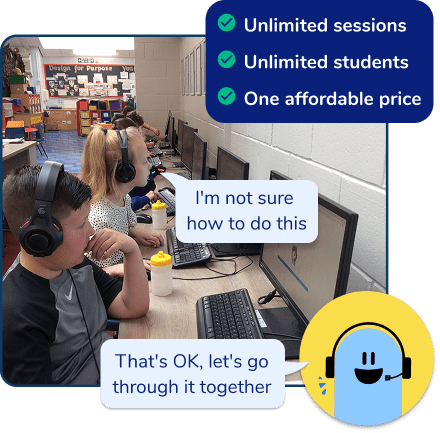
Meet Skye, the voice-based AI tutor making math success possible for every student.
Built by teachers and math experts, Skye uses the same pedagogy, curriculum and lesson structure as our traditional tutoring.
But, with more flexibility and a low cost, schools can scale online math tutoring to support every student who needs it.
Watch Skye in actionFocus on the key skills your child will need for the upcoming year
Obviously you can’t practice all of the previous years math skills over the summer holidays, but you certainly can focus on the most relevant for your child.
It’s important to focus on the foundational math skills, which essentially boils down to mental math!
Skills to practice and focus on by year group
The things that each child will have learned will vary based upon the grade they are in, so here is a brief run through of the things you should focus on for your child, depending on which grade they are in.
Children entering kindergarten
- Counting to 100 by ones and tens
- Adding and subtracting within 10 (i.e. 3 + 4 = 7, 7 – 3 = 4)
Children entering 1st grade
- Adding and subtracting within 20 (i.e. 13 +7 = 20, 20-5 = 15)
- Counting in to 120 by 5’s and 10’s from 0
Children entering 2nd grade
- Mental addition and subtraction (up to 20)
- Counting within 1,000 by 5’s, 10’s, and 100’s.
- Doubling and halving
Children entering 3rd grade
- Mental addition and subtraction (up to 100)
- Doubling and halving
- The 2,3,4,5,8,10 times tables and related division facts
Children entering 4th grade
- The 2-12 multiplication tables and related division facts
- Doubling and halving all numbers to 100
- Multiplying numbers by 10 and 100
Children entering 5th grade
- The 2-12 multiplication table and related division facts
- Multiplying multiples of 10 by 2-12 (i.e. 30 x 3 = 90 using 3 x 3 = 9)
- Multiplying and dividing numbers by 10, 100 and 1,000
If you want to save this information for later, you can download the image below:
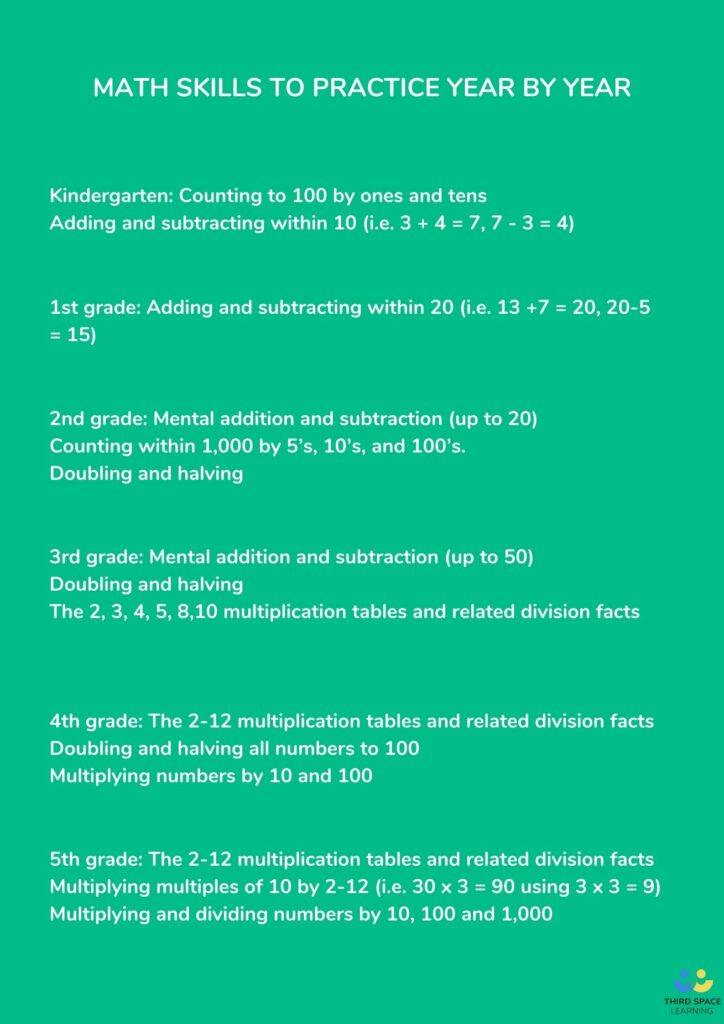
Keep talking about math all summer long
The most important thing you can do is to prepare your child for mats next year is simple.
You should keep talking about math whenever you get the chance!
But don’t worry – we don’t mean having an in-depth conversation about Pythagoras’s theorem or the 30th digit of pi!
Rather, we mean that you should just notice, discuss and encourage your child to take part in the math that happens in your day-to-day life.
Here are some common places that you could use to bring math into the fold:
In the grocery store
The supermarket isn’t just filled to the brim with delicious food, it also plays host to a number of math opportunities. You could:
- Compare prices (which is cheaper?)
- Look at and compare weights (how much more do you get in this packet than the other?)
- For children in upper elementary school, you could even challenge them to estimate the total cost of your trip (by rounding the prices and adding them mentally as you go around!)
When you are cooking
Can you think of any other opportunities in your everyday life when there are so many measurements and timings used? You could:
- Work out conversions (if it says I need 1 cup of flour, how many tablespoons is that?)
- Work out timings (it says I need to cook the turkey for 30 minutes for every pound so how long do we need to cook for?)
- Work out scale using recipes (this recipe makes enough for 4 people, so how much do we need to make enough for 10 people?)
When planning your day
As a parent you will know that planning a day with your child can involve a lot of math, so why not get them involved? You could:
- Discuss the order of the daily events, what will you do first, second and third?
- Figure out how long each event will take
- Calculate which time you’ll start and finish for the day
When watching videos online
Children love watching videos on their tablets or computers, so why not take advantage of this and get some math learning in there! These activities are mainly focused on older children, but you could:
- Discuss the number of views each video has and ask them to say the number out loud
- Round views to the nearest 10/100/1,000 etc.
- Figure out how many more views the video needs to get to 100,000 or 1,000,000 or 10,000,000
A good place to start could be this video from the team here at Third Space Learning!
Test their math understanding
You could even challenge your child to spot all the math they use during the day- perhaps rewarding them if they can spot 10 different times they have used their math skills.
Car trip math: Make “Are we there yet?” a thing of the past
Long car trips are a staple of the summer holidays, so why not use them as an opportunity to practice some math skills?
Here are some suggestions of some games and challenges to play!
Number plate multiplication
This simple game can be adapted depending on your child’s age.
For children in 3rd grade and above
Who can be the first to multiply the two numbers from the number plate of the car in front?
Who can be the first to multiply them together and then double the number?
For children in kindergarten and 1st grade
Who can be the first to add the two numbers on the number plate of the car in front? How many away from 20 is that? Can you double the first number of the number plate?
Millage sign addition (for 2nd grade +)
Can you add the mileage of the top 2 (or 3 or 4 for older children) destinations on the millage signs?
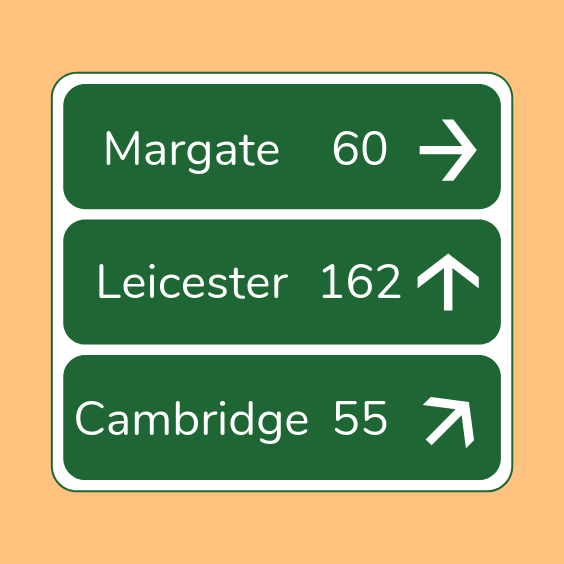
Who can add them together first?
Are we nearly there yet? (For 2nd grade +)
Let children know the total number of miles to your destination. During the journey tell them how many miles you have traveled so far- can they work out how many miles you have left to travel?
Journey times (For 3rd grade +)–
Let your child know the current time, and then the approximate time left till your destination- can they work out the time that you should arrive?
Car color addition (for any age- just adapt the numbers)
Pick two or more car colors/vehicle types, assigning each one a value (i.e. for a 1st grade child you may say a red car was worth 2 points, an 18-wheeler is worth 5 points, and a yellow car is worth 10).
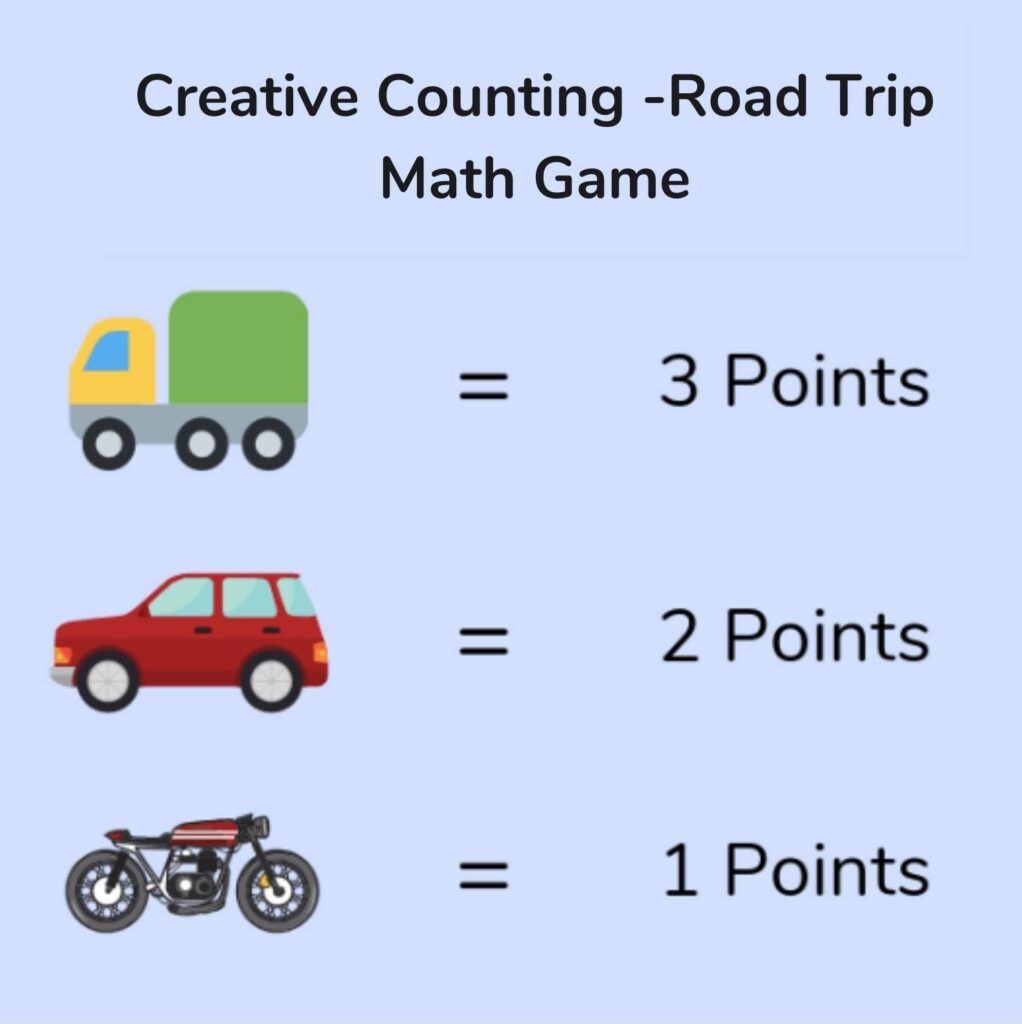
Each time they spot one of those color cars they should call it out, and if they are the first to spot it, they get to add the value of that car color to their total.
Who can be the first to score 50 or 100?
Math, paper, scissors
You can easily adapt the classic game of ‘Rock, Paper, Scissors’to add a math twist.
The way the game works is similar for all age groups- so we’ve put an outline of the game below, and then some suggestions of what versions to play for each age group.
- Stand and face your partner.
- Make one fist (or 2 for 2 handed versions) and say together with your partner ‘math, paper, scissors’ while moving your fists up and down (in a similar way to when playing rock, paper, scissors).
- On scissors, each of you puts out between 1 and 5 (or 1 and 10 if playing a two handed version) fingers.
- You then need to race to multiply, add, or do some other math to the number of fingers you have put out and the number of fingers your partner put out depending on the suggestions below.
- Call out the answer.
- The player who calls the correct answer first, wins a point.
- Record who wins each ‘battle’ in a simple table; the first player to 20 points wins!
Here are some suggestions of versions of the game you could play for each year group:-
For children entering kindergarten
Play a single handed version, adding the number of fingers on both players hands together.
For children entering 1st grade
Play a double handed version, adding the number of fingers from both players together.
For children entering 2nd grade
Play a double handed version, adding the number of fingers from both players together and then calling out the difference between this total and 20.
For children entering 3rd grade or 4th grade
Play a single or double handed version multiplying the number of fingers each player has put out together.
For children entering 5th grade
Play a double handed version, multiplying the number of fingers each player has put out together and then doubling this number, or multiplying/dividing it by 10 or 100.
Using technology to teach – Tablet math games
We all know how much children love ‘screen time’ so why not make it productive by downloading some fun math based games for your children?
There are loads of math based games, both free and paid for, on the Google Play and Apple app stores- but here are our top four suggestions of free apps which are available on both Android and Apple devices.
Please note, some of the free games do have in-app purchases so please ensure these are restricted on your devices. It’s also always important that you review the game before downloading to make sure you are happy that it is suitable for your child.
Toon Math – (free)
This app is perfect for children in upper elementary school. This is a fun math take on the classic ‘running’ style games.
Prodigy – for all age groups (free)
This game covers all areas of math in a fun way.
Math Bakery – for all age groups
This is a well crafted set of mini-games all sharing a bakery theme.
Medieval Math Battle – for all age groups
This is a cartoon ‘battle’ based game. The addition segment is totally free, with other operations costing $0.69 cents each.
Remember, back to school math doesn’t have to be daunting!
While rather unsurprisingly we are all for math learning here at Third Space Learning, we also know that it should not be the basis for a summer break for your child.
Doing some back to school math to help your child prepare for the upcoming school year should be a gentle and gradual process, but it is an important one nonetheless.
Hopefully the tips above help you avoid the summer slide, and also help you add some math fun into the holidays!
Do you have students who need extra support in math?
Give your students more opportunities to consolidate learning and practice skills through personalized math tutoring with their own dedicated online math tutor.
Each student receives differentiated instruction designed to close their individual learning gaps, and scaffolded learning ensures every student learns at the right pace. Lessons are aligned with your state’s standards and assessments, plus you’ll receive regular reports every step of the way.
Personalized one-on-one math tutoring programs are available for:
– 2nd grade tutoring
– 3rd grade tutoring
– 4th grade tutoring
– 5th grade tutoring
– 6th grade tutoring
– 7th grade tutoring
– 8th grade tutoring
Why not learn more about how it works?
Meet Skye, our AI voice tutor. Built on over a decade of tutoring expertise, Skye uses the same proven pedagogy and curriculum as our traditional tutoring to close learning gaps and accelerate progress. Watch a clip of Skye’s AI math tutoring in action.
The content in this article was originally written by primary school teacher Sophie Bartlett and has since been revised and adapted for US schools by elementary math teacher Christi Kulesza.
